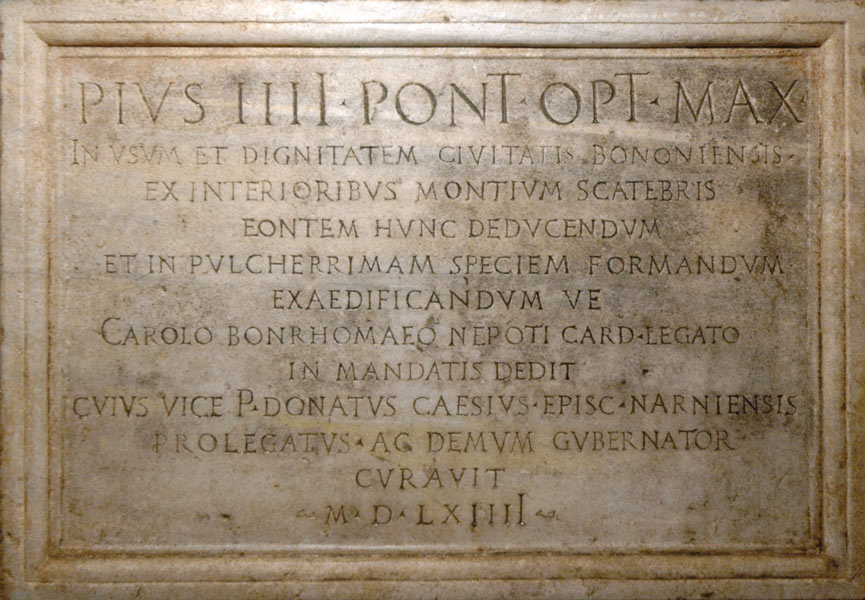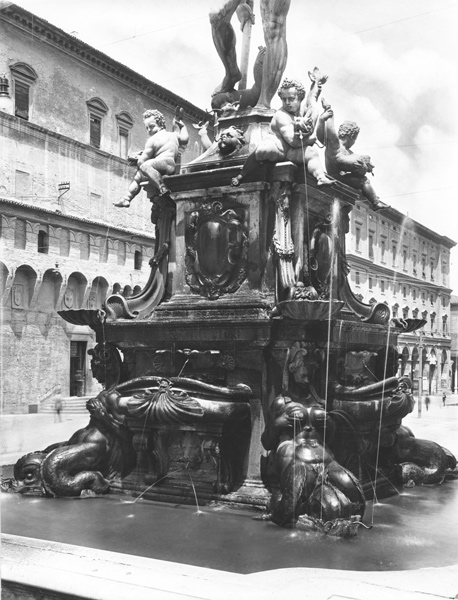The restorations of the Neptune Fountain over the years
XVIII and XIX century
In 1705, 139 years after the inauguration of the Neptune Fountain, the Senate of Bologna became concerned about the deterioration of the monument. A letter from the same year written by the sculptor Giuseppe Mazza and architect Giuseppe Antonio Torri mentioned the “scars” present on the figure of Neptune from when it was first cast.In 1708, Carlo Fagottini, the custodian of the fountain, repaired the worst cracks and greased the statue, most likely with oil- and resin-based paints, to facilitate the flow of rainwater. In 1728, the municipal architect Francesco Maria Angelini carried out further repairs.
In 1762, the smelter and clockmaker Rinaldo Gandolfi undertook major repair work on the sculpture of Neptune, inserting iron reinforcements inside the left leg to bolster the original supports that had completely worn away. He also waterproofed this limb with beeswax. In 1769 Gandolfi went on to clean the statue with a corrosive product of his own invention.
In 1887, a bitter controversy broke out in the press over the poor condition of the fountain, so much so that in April of the following year the city government launched an invasive cleaning project that had to be halted following protests from the Conservators of the Fountain.

XX century

In 1907, the Bolognese sculptor Enrico Barberi undertook a new cleaning campaign using special small bronze hammers that did not harm the surface of the statue already seriously damaged from previous restorations. In the same year, a mould of the figure of Neptune was made (it is currently kept in Bologna’s Medieval Museum) from which a plaster copy was later produced. During the years of the First World War, the bronze statue of Neptune was removed from the fountain and placed in storage at Palazzo d’Accursio. It was only returned to its original location in September 1919. In 1935, the statue underwent a highly controversial cleaning by the De Stefanis brothers. Between 1943 and 1946, the so-called “Giant” was once again moved to safety away from the dangers of war. Before being reinstalled, it was restored by the smelter Bruno Bearzi who removed the incrustations on the statue and added a patina using an industrial resin-based paint that may have slowed down the process of corrosion.
After a long series of studies and tests financed by the Association of Bolognese Industrialists for Culture, a new restoration of the Neptune Fountain was initiated in February 1988. A large team of bronze restoration specialists led by Giovanni Morigi and marble restoration experts led by Ottorino Nonfarmale worked on the monument for about two years. During this period the statue of Neptune was moved to the Cortile d’Onore in Palazzo Comunale and housed inside a wooden structure designed by the sculptor and scenographer Mario Ceroli. The restoration of the fountain had major public impact at the time: thanks to Ceroli’s “House of Neptune” more than two hundred thousand people were able to admire up close the complexity and precision of the restoration of the bronzes.
 English
English Italian
Italian